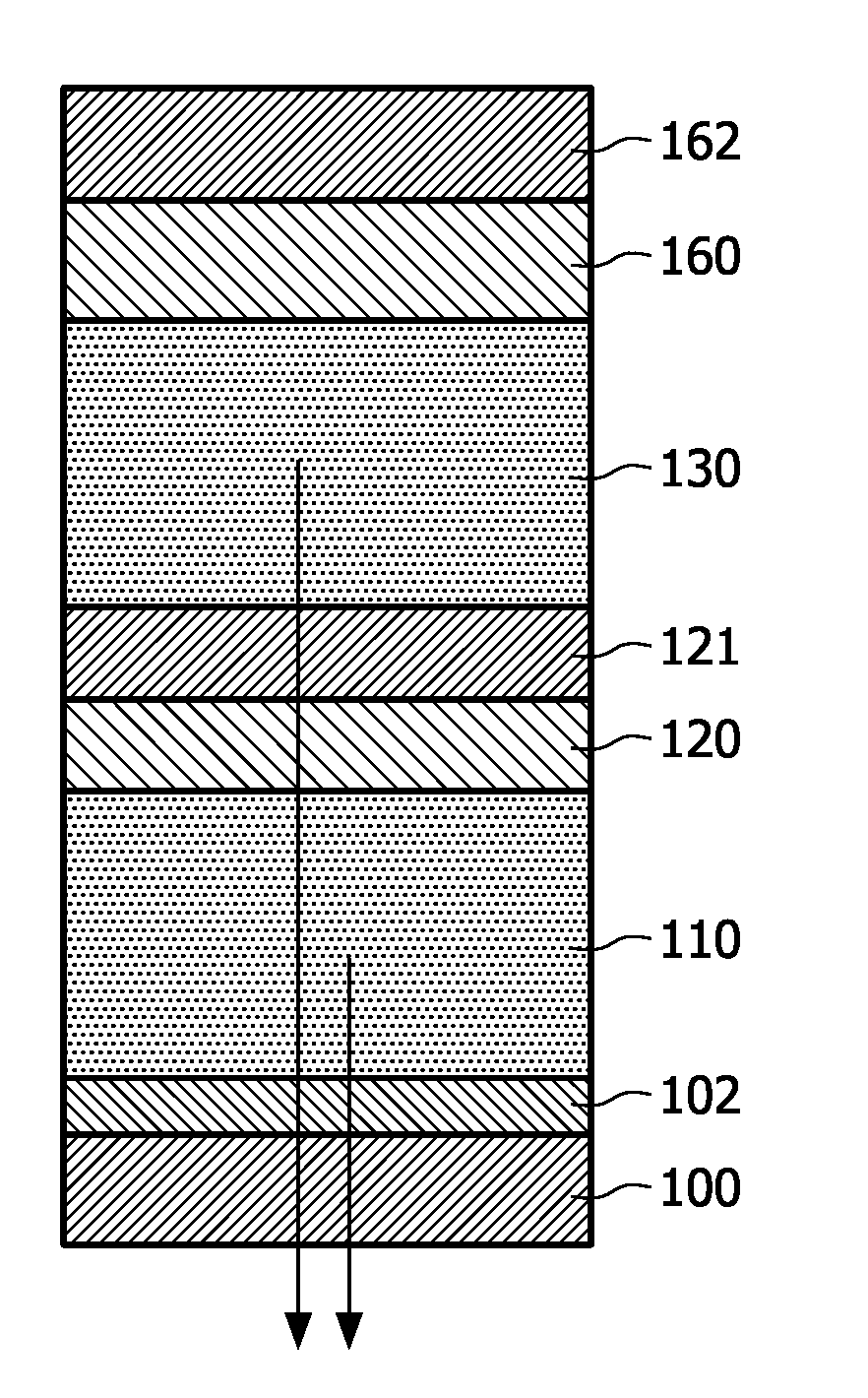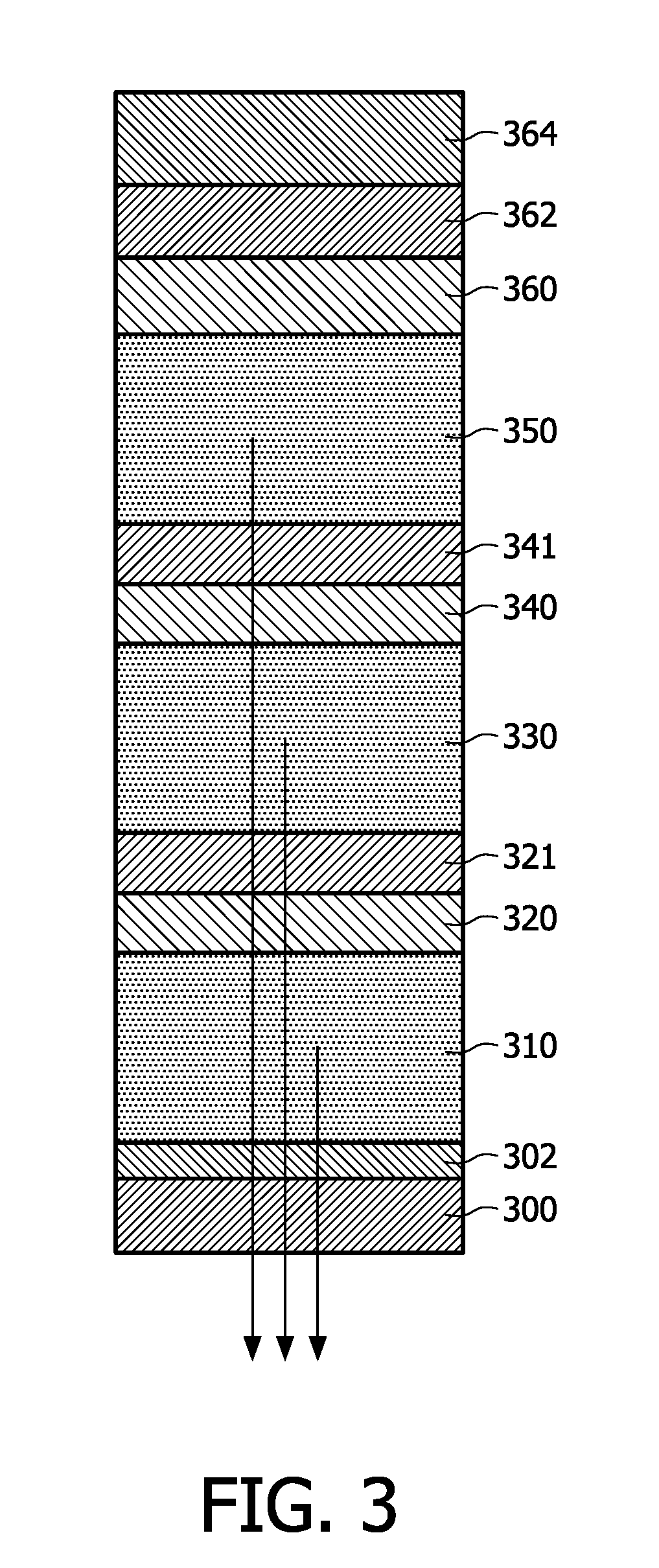Stacked electro-optically active organic diode with inorganic semiconductor connection layer
a semiconductor connection layer and electro-optically active technology, applied in the direction of thermoelectric device junction materials, electrical apparatus, semiconductor devices, etc., can solve the problems of increasing the risk of damage to the organic material, the risk of high field strengths occurring at such defects, and the excess damage such shorts have on the organic material, so as to reduce the risk of conditions, the effect of good transparency
- Summary
- Abstract
- Description
- Claims
- Application Information
AI Technical Summary
Benefits of technology
Problems solved by technology
Method used
Image
Examples
Embodiment Construction
[0036]FIG. 1 schematically shows a cross-sectional view of layers in a stacked electro-optically active organic diode according to an embodiment. The stacked organic diode comprises a substrate 100, an anode layer 102, a first electro-optically active organic layer 110, a connection layer 120, 121, a second electro-optically active organic layer 130, an inorganic short protection layer 160 and a cathode layer 162.
[0037]The substrate 100 is typically transparent and may for example be made of a ceramic, e.g. glass or silicon, a plastic or a metal. The substrate may be rigid or flexible.
[0038]The anode layer 102 is a hole-injecting layer, typically of a relatively high work function and electrically conducting material, and is typically transparent in order to let light through, which is indicated by an arrow in FIG. 1. One currently predominant example of a transparent material suitable for the anode layer is indium tin oxide (ITO). Other examples include metals, metal oxides, doped ...
PUM
 Login to View More
Login to View More Abstract
Description
Claims
Application Information
 Login to View More
Login to View More - R&D
- Intellectual Property
- Life Sciences
- Materials
- Tech Scout
- Unparalleled Data Quality
- Higher Quality Content
- 60% Fewer Hallucinations
Browse by: Latest US Patents, China's latest patents, Technical Efficacy Thesaurus, Application Domain, Technology Topic, Popular Technical Reports.
© 2025 PatSnap. All rights reserved.Legal|Privacy policy|Modern Slavery Act Transparency Statement|Sitemap|About US| Contact US: help@patsnap.com



